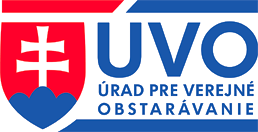Lowest price criterion vs. MEAT criteria
If the criterion of the lowest price is used, the winner will be the one who submits the bid with the lowest price without examining the quality offered. When applying this criterion, any comparison of quality or analysis of future costs is not possible, the only criterion to be taken into account is price.
The criterion of the lowest price is the simplest to use, but has major disadvantages in its limitations, such as:
- It does not allow the contracting authority or entity to take qualitative aspects into account. In addition to the quality factors included in the specifications, which all competitions must meet, the quality of the product procured in this case is not subject to evaluation.
- It does not allow the contracting authority to take into account innovations and innovative solutions.
- It does not allow the contracting authority to take into account the costs of the contracted object to be procured during the life cycle. Only direct purchase costs or the initial purchase price within the specified specifications may be taken into account.
On the other hand, when applying the criterion of the best price-quality ratio (MEAT criterion), the contracting authority and the contracting authority may take into account other criteria in addition to the price, e.g. quality, delivery time and post-warranty service and others. Each selected criterion is assigned a relative weight by the contracting authority, which reflects the relative importance. The purpose of the MEAT criteria is to find the bidder that offers the best value for money.
Unlike the lowest price criterion, the MEAT criteria represent a number of advantages, including in particular:
- Takes into account qualitative aspects. They are usually used when quality is important to the competition announcer.
- Allows you to take into account innovations or innovative solutions. This option is particularly important for small and medium-sized enterprises (SMEs), which are a source of innovation and important research and development activities.
- For long-term contracts, it allows the contracting authority to take into account the life-cycle costs of the product purchased and not only the direct purchase costs or the initial purchase price within the set specifications.
The choice of the criterion used is left to the choice of the contracting authority or entity, but it is important to point out the significant advantages of using the MEAT criteria.



![[Translate to English:] [Translate to English:]](/fileadmin/images/content/Cena_vs._MEAT.jpg)